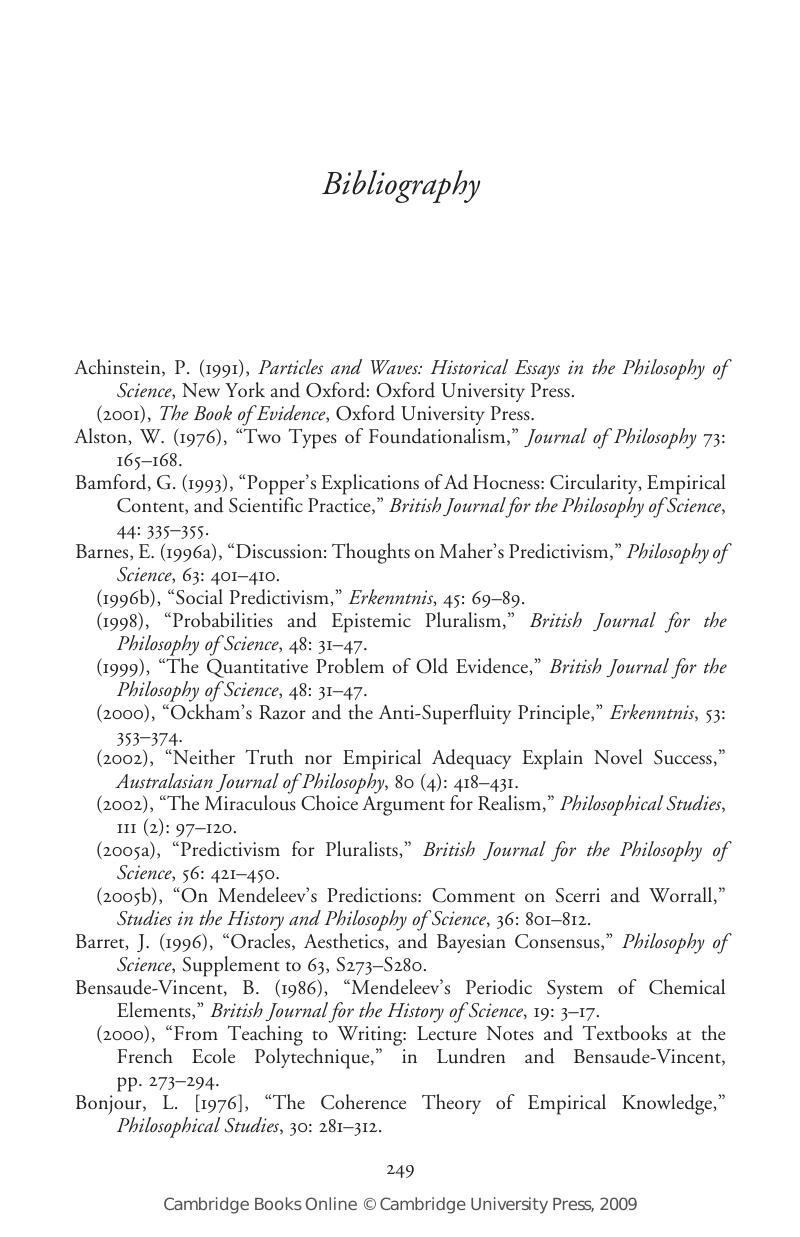Book contents
- Frontmatter
- Contents
- Acknowledgments
- Chapter 1 The paradox of predictivism
- Chapter 2 Epistemic pluralism
- Chapter 3 Predictivism and the Periodic Table of the Elements
- Chapter 4 Miracle arguments and the demise of strong predictivism
- Chapter 5 The predicting community
- Chapter 6 Back to epistemic pluralism
- Chapter 7 Postlude on old evidence
- Chapter 8 A paradox resolved
- Glossary
- Bibliography
- Index
- References
Bibliography
Published online by Cambridge University Press: 22 September 2009
- Frontmatter
- Contents
- Acknowledgments
- Chapter 1 The paradox of predictivism
- Chapter 2 Epistemic pluralism
- Chapter 3 Predictivism and the Periodic Table of the Elements
- Chapter 4 Miracle arguments and the demise of strong predictivism
- Chapter 5 The predicting community
- Chapter 6 Back to epistemic pluralism
- Chapter 7 Postlude on old evidence
- Chapter 8 A paradox resolved
- Glossary
- Bibliography
- Index
- References
Summary

- Type
- Chapter
- Information
- The Paradox of Predictivism , pp. 249 - 257Publisher: Cambridge University PressPrint publication year: 2008

